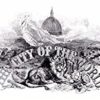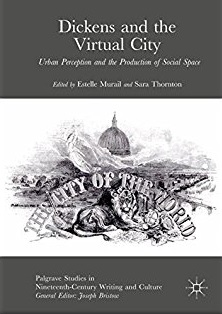Ben Moore in Dickens and the Virtual City: Urban Perception and the Production of Social Space (Palgrave, 2017), 35-56.
Modern cities are dominated by overlapping and interdependent line of connectivity, in the forms of ports, streets, railways, airports, telegraphs, telephone lines, and, in recent years, electronic wireless networks. Such connections or conduits are typically interpreted as promoting the flow and accumulation of capital, often as part of a logic of ever-increasing globalization. Yet such conduits can also serve as a means of creatively conceptualising or re-imagining the modern city, having the capacity to break apart as well as connect city space, fracturing or transforming old forms of urbanism even as they create new ones.
This chapter focuses on two conduits that are particularly important to Dickens’ imaginative production of the modern city: the railway and the river, as they appear in Dombey and Son (1846-1848) and Our Mutual Friend (1864-1865). While the first is symbolic of nineteenth century modernity, the second seems comparatively archaic, even primordial; yet each expresses a way of imagining the modern city that is typical of Dickens.
More details are available on the publisher’s website.

